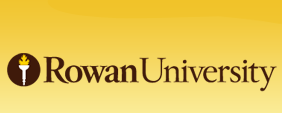Document Type
Book Chapter
Version Deposited
Published Version
Publication Date
Winter 2023
Abstract
As online environments have in many ways changed how information (including misinformation) is created and distributed, many educators have recognized a need for teaching new strategies for evaluating online sources for credibility and potential bias. Educators like Mike Caulfield and research groups like the Stanford History Education Group (SHEG) have stressed the need for “lateral reading,” a habit of fact-checking when initially evaluating a source. When reading laterally, a person doesn’t spend extensive time initially examining what a source says about itself; instead, they quickly move off of the site in question to look at what others have said about the source and determine if that source is worth a closer read. Lateral reading is a vital first step to checking a source’s credibility, particularly when the credibility or motivations of a source’s creators are unclear. It’s also an important part of critical reading in everyday life.
The value of lateral reading was made evident in SHEG’s 2019 study, in which professional fact-checkers, who regularly practice “lateral reading,” far outperformed history professors and undergraduate college students in identifying misleading information. SHEG’s Civic Online Reasoning curriculum helps many middle and high school teachers integrate lateral reading strategies into curricula. In higher education, Mike Caulfield’s work on web literacy, in particular his book Web Literacy for Student Fact-Checkers and his SIFT strategy, offers helpful models for lateral reading.
Despite lateral reading’s seeming simplicity (moving off a webpage to find other coverage), if done formulaically, it’s not nearly as effective as if done with critical thought. For example, once you’ve left the webpage in question, what do you search for and what do you click on? How do you read the sources you use to investigate the source in question? Personal beliefs and biases can also powerfully influence how accurately a person evaluates a source. As research on confirmation bias illustrates, people tend to give less scrutiny to sources that fit with their pre-existing beliefs than they do to sources that challenge those beliefs. Done well, lateral reading requires a range of complex analytical and metacognitive reading skills and strategies. If you dig more deeply into SHEG and Mike Caulfield’s extensive work on lateral reading, this becomes evident. However, overviews of lateral reading tend to neglect how multi-layered critical lateral reading really is.
Research on students’ web evaluation skills suggests that the range of critical reading strategies that are part of lateral reading are usually not taught explicitly. In contrast, some studies indicate that students are taught checklist approaches to evaluating online sources that focus on superficial features of a website (e.g., CRAAP, RADCAB). A checklist mentality can prevent students from engaging in more critical reading and evaluation of sources. The complexities of web evaluation point to the need for teaching lateral reading as a kind of critical reading that involves analysis of a source’s larger context and purpose as well as metacognitive reflection.
In this chapter, we—two academic public services librarians who liaise with different disciplinary areas (the humanities/social sciences and life sciences)—discuss a scaffolded approach to teaching web source evaluation that brings together lateral and critical reading strategies. (Though lateral and critical are not mutually exclusive categories, critical thinking that ideally occurs during lateral reading is often not taught explicitly.) More specifically, we share our experience with developing an online tutorial on lateral reading and evaluating students’ analytical reading practices while they completed the tutorial. Finally, we discuss pedagogical takeaways useful for teaching lateral reading and critical source evaluation in a range of contexts.
Recommended Citation
Baer, Andrea and Kipnis, Daniel G. "Diving Below the Surface: A Layered Approach to Teaching Online Source Evaluation through Lateral and Critical Reading." In Teaching Critical Reading Skills: Strategies for Academic Librarians, Volume 1, edited by Hannah Gascho Rempel and Rachel Hamelers, 275-289. Chicago, IL, ALA Press, 2023.
Creative Commons License

This work is licensed under a Creative Commons Attribution-NonCommercial-Share Alike 4.0 International License.


Comments
Chapter 25 was published in:
Teaching Critical Reading Skills: Strategies for Academic Librarians, Volume 1
Item Number: 978-0-8389-3928-4eb